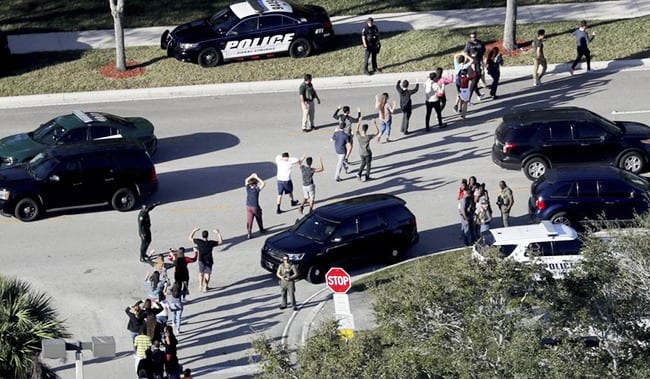
Mental Illness and Mass Homicide
Findings regarding mass homicide vary considerably, depending on how the author defines mass killings. Some studies include all mass killings, including those associated with crime (e.g., mob-related killings in Chicago in the 1930s) and those in which a parent kills multiple family members. Other researchers define mass homicide as killing three people, others four people, and still others as few as one person if the intent was to kill more (e.g., MF Stone in 2015). For years, the federal government defined “mass murderer” as someone who killed four or more people; in 2013, the term was redefined to three or more people killed. Some studies include only mass killings in which guns were used (e.g., Follman et al., 2012) and exclude those in which knives, cars or other weapons were used (e.g., Adacia Chambers, diagnosed with bipolar disorder, who killed 4 and injured 48 while driving her car in Stillwater, Oklahoma, in 2015). The period covered by the study is also important because mass killings were less common early in the early 20th century than in the late 20th century and since.
The most important variable is the definition of mental illness used in the study; studies using a narrow definition (e.g., psychosis) produce different results than those using a broad definition of mental illness and/or including substance abuse as mental illness. Full Story
Serious Mental Illness and Mass Homicide Connection
Four assumptions frequently arise in the aftermath of mass shootings in the United States: (1) that mental illness causes gun violence, (2) that psychiatric diagnosis can predict gun crime, (3) that shootings represent the deranged acts of mentally ill loners, and (4) that gun control “won’t prevent” another Newtown (Connecticut school mass shooting). Each of these statements is certainly true in particular instances. Yet, as we show, notions of mental illness that emerge in relation to mass shootings frequently reflect larger cultural stereotypes and anxieties about matters such as race/ethnicity, social class, and politics. These issues become obscured when mass shootings come to stand in for all gun crime, and when “mentally ill” ceases to be a medical designation and becomes a sign of violent threat.
Meanwhile, a growing body of research suggests that mass shootings represent anecdotal distortions of, rather than representations of, the actions of “mentally ill” people as an aggregate group. By most estimates, there were fewer than 200 mass shootings reported in the United States—often defined as crimes in which four or more people are shot in an event, or related series of events—between 1982 and 2012.27,28
Recent reports suggest that 160 of these events occurred after the year 200029 and that mass shooting rose particularly in 2013 and 2014.28 As anthropologists and sociologists of medicine have noted, the time since the early 1980s also marked a consistent broadening of diagnostic categories and an expanding number of persons classifiable as “mentally ill.”30 Scholars who study violence prevention thus contend that mass shootings occur far too infrequently to allow for the statistical modelling and predictability—factors that lie at the heart of effective public health interventions. Swanson argues that mass shootings denote “rare acts of violence”31 that have little predictive or preventive validity in relation to the bigger picture of the 32 000 fatalities and 74 000 injuries caused on average by gun violence and gun suicide each year in the United States.32
Mass shootings represent national awakenings and moments when seeming political or social adversaries might come together to find common ground, whether guns are allowed, regulated, or banned. Doing so, however, means recognizing that gun crimes, mental illnesses, social networks, and gun access issues are complexly interrelated, and not reducible to simple cause and effect. Ultimately, the ways our society frames these connections reveal as much about our particular cultural politics, biases, and blind spots as it does about the acts of lone, and obviously troubled, individuals. NCBI
Other Articles of Interest
Good Time To Buy IBM or Should You Wait? (Mar 15)
Is the Bitcoin Bull Market dead or just taking a breather? (Mar 8)
Is this the end for Bitcoin or is this a buying opportunity? (Jan 24)
Stock Market Insanity Trend is Gathering Momentum (Jan 10)
Is value investing Dead (Jan 9)
Irrational markets and Foolish Investor: perfect recipe for disaster (Jan 5)
Stock market Crash Myths and Realities (Jan 3)
Bull-Bear Markets & Arrogance (Jan 1)
Will The Stock Market Crash In 2018 (Dec 11)
Has US Dollar Finally Hit Bottom (Dec 6)
BitCoin Has Done What Precious Metals Never Could (Dec 4)
Experts Making Stock Market Crash Forecasts usually know nothing (Nov 17)
1987 stock market crash anniversary discussions- nothing but rubbish ( Oct 24)
Dow 22K Predicted In July 2017; Next Target Dow 30k? (Oct 15)
Anxiety and Greed Index Don’t Support Stock Market Crash (Oct 14)
Fed States Inflation is not an issue? (Oct 13)


